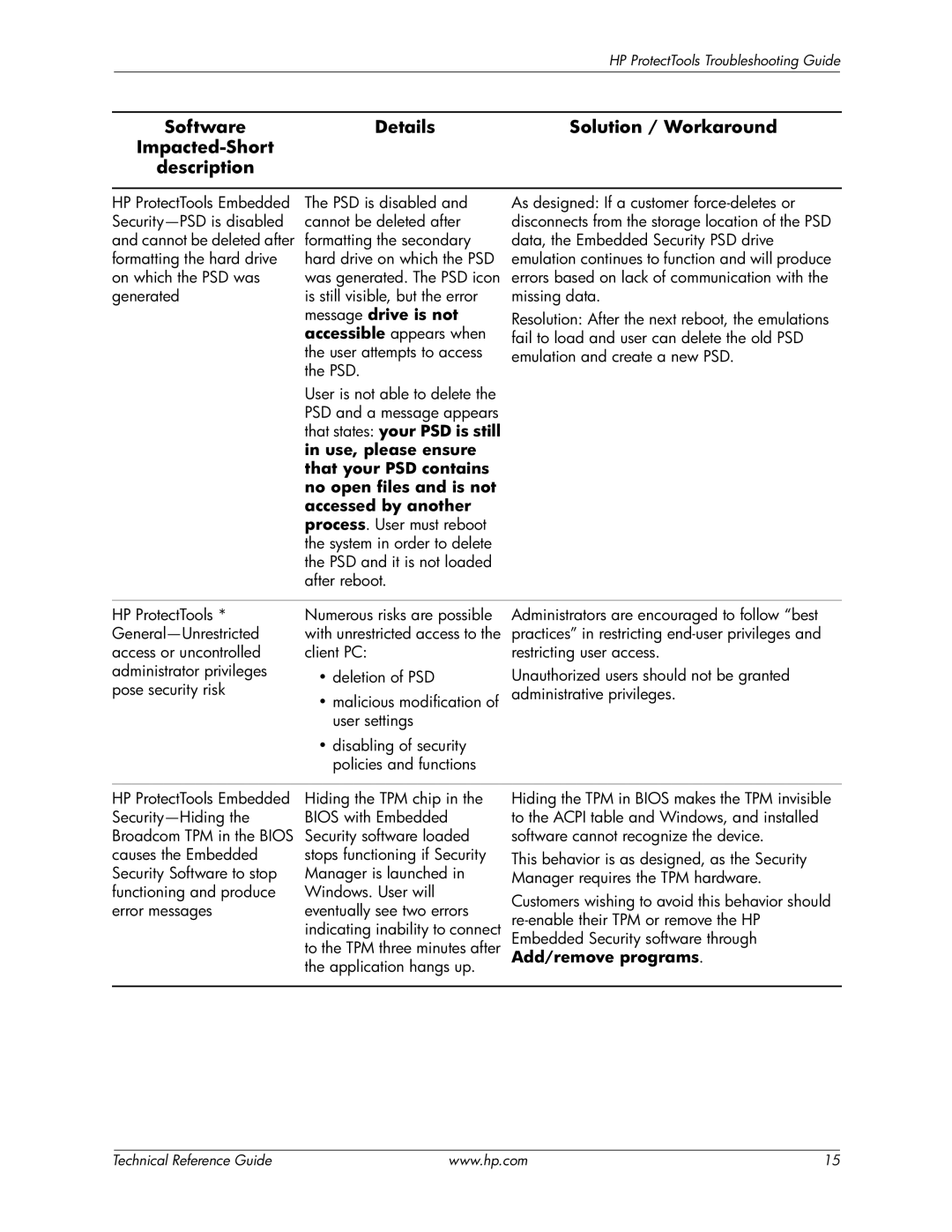
|
|
| HP ProtectTools Troubleshooting Guide | |
|
|
|
|
|
| Software | Details | Solution / Workaround | |
|
|
|
| |
| description |
|
|
|
|
|
| ||
HP ProtectTools Embedded | The PSD is disabled and | As designed: If a customer | ||
cannot be deleted after | disconnects from the storage location of the PSD | |||
and cannot be deleted after | formatting the secondary | data, the Embedded Security PSD drive | ||
formatting the hard drive | hard drive on which the PSD | emulation continues to function and will produce | ||
on which the PSD was | was generated. The PSD icon | errors based on lack of communication with the | ||
generated | is still visible, but the error | missing data. | ||
|
| message drive is not | Resolution: After the next reboot, the emulations | |
|
| accessible appears when | fail to load and user can delete the old PSD | |
|
| the user attempts to access | emulation and create a new PSD. | |
|
| the PSD. |
|
|
|
| User is not able to delete the |
|
|
|
| PSD and a message appears |
|
|
|
| that states: your PSD is still |
|
|
|
| in use, please ensure |
|
|
|
| that your PSD contains |
|
|
|
| no open files and is not |
|
|
|
| accessed by another |
|
|
|
| process. User must reboot |
|
|
|
| the system in order to delete |
|
|
|
| the PSD and it is not loaded |
|
|
|
| after reboot. |
|
|
|
|
| ||
HP ProtectTools * | Numerous risks are possible | Administrators are encouraged to follow “best | ||
with unrestricted access to the | practices” in restricting | |||
access or uncontrolled | client PC: | restricting user access. | ||
administrator privileges | • deletion of PSD | Unauthorized users should not be granted | ||
pose security risk | • malicious modification of | administrative privileges. | ||
|
| |||
|
| user settings |
|
|
|
| • disabling of security |
|
|
|
| policies and functions |
|
|
HP ProtectTools Embedded
Hiding the TPM chip in the BIOS with Embedded Security software loaded stops functioning if Security Manager is launched in Windows. User will eventually see two errors indicating inability to connect to the TPM three minutes after the application hangs up.
Hiding the TPM in BIOS makes the TPM invisible to the ACPI table and Windows, and installed software cannot recognize the device.
This behavior is as designed, as the Security Manager requires the TPM hardware.
Customers wishing to avoid this behavior should
Technical Reference Guide | www.hp.com | 15 |
